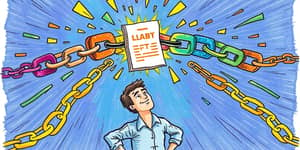
In a world where credit is easily within reach, it is tempting to rely on loans or cards to bridge gaps in everyday budgets. Yet, when borrowing becomes a routine solution for predictable costs, the result is a mounting cycle of debt and interest that can feel impossible to escape. This article explores why you should avoid borrowing for expenses that repeat monthly and offers actionable steps to regain control of your financial future.
Whether you are juggling groceries, utilities, or rent, habitual borrowing can gradually erode your ability to save, invest, and breathe easy. By learning from both personal finance data and national fiscal challenges, you can develop a resilient strategy that keeps debt in its place.
At first glance, borrowing for a one-time emergency may feel justifiable. However, using credit for regular bills transforms an ordinary expense into an unending liability. Credit card interest rates often exceed 20%, meaning a $500 monthly grocery budget could grow into a $600 or $700 payment over time if unpaid immediately.
According to recent data, 33% of Americans have more credit card debt than emergency savings. That imbalance has only slightly improved since 2023, but it remains far above pre-pandemic levels. When you tap credit for rent or utilities, you begin feeding an interest machine that demands regular payments, often at rates far higher than the initial cost.
Meanwhile, the federal government faces a similar dilemma. Through May 2025, the U.S. has spent $665 billion on interest alone, making it the third-largest expenditure after Social Security and Medicare. With a mid-year deficit hitting $1.3 trillion, rising interest payments are crowding out investments in critical areas like infrastructure and education.
To escape the revolving door of monthly borrowing, you need both a plan and the discipline to execute it. Begin by reviewing your credit report, income streams, and all recurring expenses. This clarity will show you where borrowing pressure is highest.
Next, choose a debt repayment framework that suits your personality and goals. Two proven methods are:
By using either method, you force yourself to focus payments and eliminate high-cost debts. This approach replaces cycle of increased interest payments with a clear finish line, boosting motivation.
Just as individuals struggle with recurring debt, the federal government must allocate ever-larger shares of its budget to interest. In fiscal year 2025, interest outlays are second only to entitlement spending.
Every dollar spent servicing debt is a dollar not invested in roads, schools, or research. On a personal level, every payment made toward credit card interest is a dollar not saved for retirement, emergencies, or opportunities. The parallel is stark: interest costs crowd out other financial priorities, whether in Washington or in our own wallets.
The key to breaking free from chronic borrowing is preparation. An emergency fund of three to six months’ living expenses provides a buffer against common shocks: car repairs, medical bills, or sudden loss of income. Knowing you are covered means you won’t reach for a credit card at the first sign of trouble.
To build this safety net, start small. Set aside a fixed percentage of each paycheck into a dedicated account. Automate transfers to remove the temptation to spend that money elsewhere. Over time, your jar of reserves will swell, offering peace of mind.
Alongside saving, cultivate a budget that aligns your spending with your goals. Track every subscription, utility bill, and grocery run. Look for areas to trim—perhaps by renegotiating service plans or cooking more meals at home. Even modest savings can be redirected into debt payoff or your emergency fund.
Financial literacy is the bedrock of long-term stability. Younger generations, particularly millennials and Gen Xers, have shown higher rates of credit dependency for recurring costs. By contrast, Gen Z and Baby Boomers tend to rely more on savings.
Invest time in understanding interest rates, credit scores, and budgeting tools. Many communities offer free workshops, and an array of online resources can guide you through the basics. Armed with knowledge, you can make informed decisions that keep you one step ahead of debt traps.
Build and maintain an emergency fund and develop a repayment plan that tackles high-cost debt first. Combine this with ongoing learning and disciplined budgeting, and you will transform your finances from reactive to proactive. The goal is not just to survive each month, but to thrive, pursue dreams, and secure long-term prosperity.
By avoiding borrowing for expenses that repeat each month, you break the pattern of growing interest payments and reclaim your budget. This shift requires intention and commitment, but the rewards—greater flexibility, reduced stress, and a clear path to your goals—are profound. Start today, and watch how small choices compound into lasting financial freedom.
References













